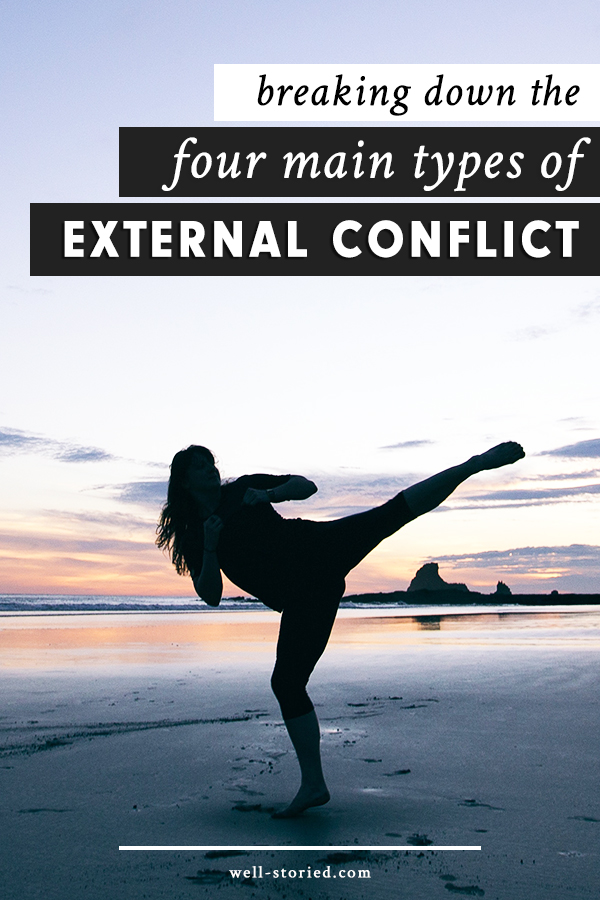Blog
Atomic Storytelling: Developing Effective Story Beats
When writing, storytellers possess the god-like power to make something out of nothing. To create worlds where previously none existed and breathe life into characters whose journeys are entirely of their own creation.
To make something out of nothing (and better yet, to do it well), it’s important to understand the composition of the thing one is trying to create.
For storytellers, a major component of this composition is structure. Every story features at least one arc of events. This arc can be broken down into acts, which are comprised of chapters that contain scenes.
I’ve discussed each of these tiers of story structure here on the blog, but the one element I’ve yet to explore in detail is perhaps the most atomic aspect of a story’s composition: its beats.
The Do's and Don'ts of Crafting Subplots
Subplots are more than just a secondary plotline in a story; They're secondary conflicts that arise from characters’ actions & reactions as they engage with the story’s central conflict.
What types of subplots exist, how can these secondary plotlines lend depth to your story, and most importantly, how can you craft effective subplots all your own?
How Scene Choices Determine Successful Character Arcs
While reading, we become active participants in a point-of-view character’s journey (seriously, our brains become the character). This means that when characters undergo a deep journey of change, we do too. Character arcs are the method through which authors move hearts, change minds, and influence the world.
Guest Post: Anatomy of a Romantic Comedy — Seven Essential Story Beats
They’ve hit the scene in an incredible way, from the slew of Netflix films to the rise in rom-com fiction (sometimes called “chick lit”) in both Adult and YA. But rom-coms never really went away. They simply faded for a time, with new books and films releasing at a slower pace — a great example of what can happen in the ever-shifting market.
With rom-coms once more on the rise, I’d like to break down the anatomy of the genre using the structure outlined in Billy Mernitt’s Writing the Romantic Comedy. (Note: Buy this book. Seriously. It’s a sharp tool in your writing arsenal. Mernitt explains each of his seven story beats with brilliant examples from existing rom-coms. It’s a must-read.)
In The Anatomy of a Romantic Comedy, Mernitt takes the classic three-act structure (e.g. Conflict, Crisis, Resolution) and renames each point to set them into a rom-com frame: Meet, Lose, Get.
How to Craft Static Character Arcs For Your Novel
A character arc follows the inner journey a character undergoes throughout a story.
In most cases, we think of character arcs as being transformative. A protagonist overcomes a fear or flaw in an effort to achieve their goal, or an anti-hero finds themselves falling victim to their darkest doubts and desires. But what about those arcs in which no transformation takes place? Is a character arc lacking in development if the character remains the person they are when their story began?
Not at all, writer — or, at least, not necessarily. When crafted with intention, this type of arc can tell a powerful inner story. Today on the blog, let’s take the time to break down the major beats that bring this static arc to life.
How to Craft Negative Character Arcs For Your Novel
A long time ago, in a galaxy far, far away, I wrote an article on character arcs.
In that article, I explained the importance of developing character arcs in your stories, established the three arcs found in fiction, and broke down the eleven major beats that comprise the most popular of the three: positive change arcs. I also asked if you’d be interested in similar breakdowns of the remaining two styles, negative change arcs and flat arcs, and your answer was a resounding yes.
Despite this, I found myself caught up in other articles and topics and failed to circle back around — until now, that is. Today, I’m excited to delve into the dark descent of negative change arcs with you all, soon to be followed by an article on flat arcs as well. Have a character for whom a bittersweet or tragic ending is in order? This is the article for you, writer.
Exploring Three Ways to Structure Your Book Series
I’ve always been drawn to book series, both as a reader and a writer.
Perhaps it’s the depth a series can achieve, allowing for rich and expansive storytelling, or simply because I long to spend more time with the characters I love. From a career standpoint, series also offer authors the opportunity to build upon their backlists with related works, encouraging book sales as readers return for more of what captivated them in book one.
Think you may like to write a book series of your own? It’s important to note that not all series are created equal. In fact, there are three distinct ways you can structure a book series, and understanding which structure is right for your stories and career goals is key to setting yourself up for series success. Today, let’s break down these structures together.
Do You Know What Drives Your Story’s Narrative?
At the heart of every good story is an arc, a series of related events that compels the reader to engage with the narrative.
Sometimes, that arc is one of external thrills and escapades. Will they catch the killer? Will she break the curse? Other times, that arc is one of inner turmoil or transformation. Will his pride lead to eventual downfall? Will she find it in her heart to forgive? Certainly, both types of arcs can be present in a story. But ultimately, only one can serve as the driving force behind its narrative.
As writers, why is it important to understand which arc lies at the heart of our stories? Let’s examine the difference between plot-driven and character-driven narratives today on the blog.
Finding the Novel Outlining Process that Works for You
There’s nothing more nebulous than trying to produce a decent outline for your novel.
With dozens of outlining methods to choose from, all of which seem to work well for some writers but not for others, defining the outlining process that works best for you and your stories can be more than a little intimidating. How much detail do you need to include? Is outlining really necessary? Isn't there a better way?
Writers, it's time to cut through the chaos and get down to business. Let's find the outlining method that works best for each of us in today's breakdown!
Outline Your Novel With the 3-Act Story Structure
Are you ready to take the overwhelm out of outlining your novel?
Transforming a new story idea or a shapeless first draft into a spectacular full-length book is more than a little difficult. There are endless elements at play: plot arcs, character arcs, stakes, themes, pacing... It's no wonder many writers struggle to give life to the stories in their heads.
Fortunately, giving shape to your story doesn't have to be as difficult as it may seem. You can craft a strong blueprint for your novel with ease by making good use of a little tool called story structure.
How to Craft Riveting Internal Conflict For Your Story
Conflict is the backbone of any good story.
External conflict, which we broke down recently here on the blog, occurs between a character and an outside force, whether that be another character or an element of nature, society, or technology. On the other hand, internal conflict arises from an ethical or emotional debate that occurs within a character.
This style of conflict, while occurring in some form in every story, has the same ability to carry the full weight of a plot as external conflict. But how? Well, let’s discuss internal conflict together today!
Breaking Down The Four Main Types of External Conflict
Conflict drives narrative.
As humans, our curiosity piques when two forces oppose one another. “What is happening?”, we ask. Why are these two forces at odds? How will the conflict play out? Who will win? What would I do if I were in that situation?
These are the questions readers ask, more or less subconsciously, as they read. Which means they’re also exactly the kinds of questions writers should ask themselves when crafting plots for their stories.
In stories, as in life, there are two types of conflict: internal and external. Internal conflicts are the mental, emotional, or spiritual struggles a person faces—Character vs Self—which we’ll talk about on the blog soon!
Today, however, we’re going to focus on the second type of struggle: external conflict. Shall we dive into the breakdown?











